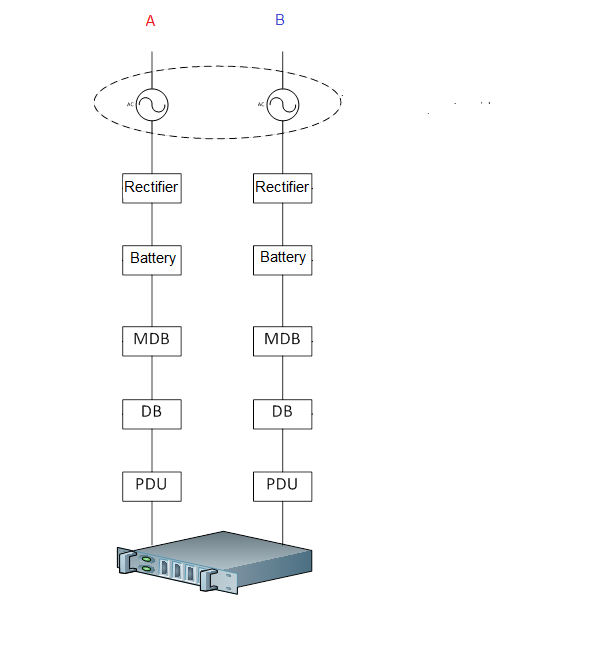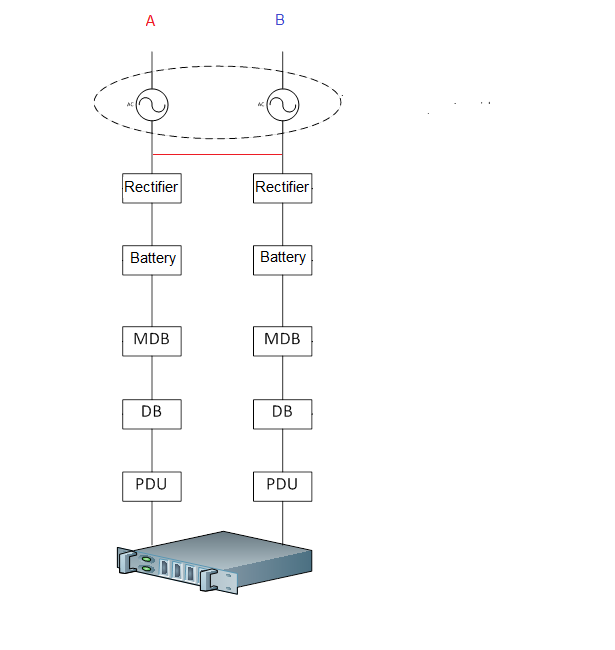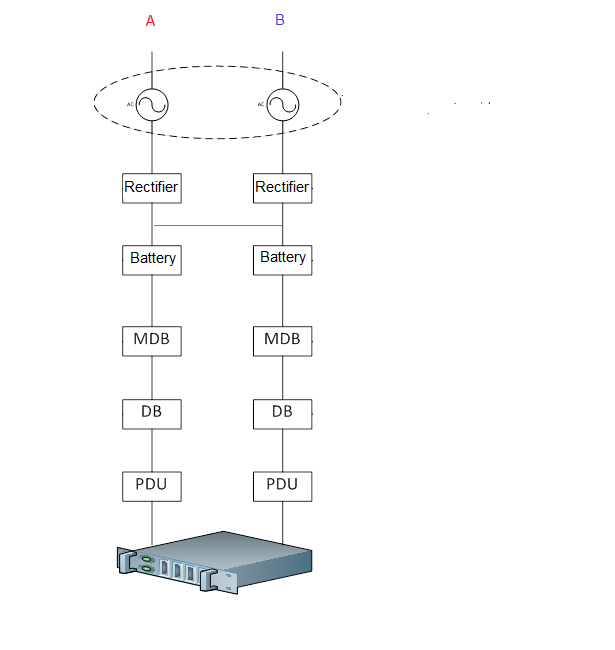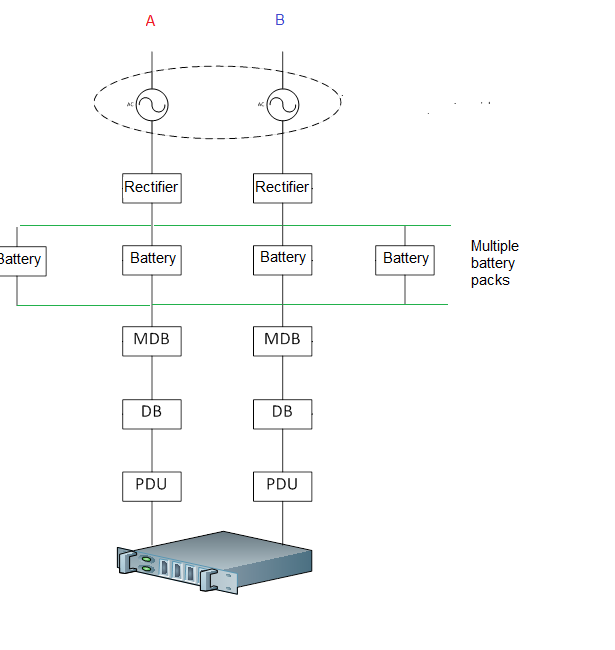A further brief thought on the virtues of DC.
Remember this diagram?
One legitimate question is why there are two PSUs in the typical server. Part of the answer is that PSUs break down: the internal fans break, the electronics get broken by power surges, broken power cables and the like. Eliminating PSUs also eliminates a source of unreliability. Without the PSUs, the only things going into the back are the live and neutral wires of a +12V DC power supply. The other answer is we have two PSUs because, at least in a Tier-3 or -4 data centre, it is sometimes necessary to shut down either the A or the B power supply, either for maintenance or for re-configuration.
For the latter reason, there is a certain degree of sense in delivering two separate wires to the server. But with DC, we have a lot more freedom about what happens between the power source and the server. AC delivers the power in a sine wave. If you join two AC supplies, their respective sine waves must be synchronized: if they’re not, you’ll get a James Bond result of sparks and pyrotechnics. But, if you join two DC supplies of the same voltage, nothing goes wrong. And this enables a further saving.
If we do this:
that red line will quite probably be red in reality. But if we do this:
The green line will be fine.
What does this buy us?
It buys us a much smaller battery pack. Battery life is measured in kilowatt hours, so a battery that can supply a kilowatt for one hour will have a 1 kW hr life, but so will a battery that can supply 10 kilowatts for six minutes.
A typical data centre will allow about 10 minutes of battery life. If this is based on a 1 MW load, that’s 166kW hours which, at a little over 2 kW hours per battery, is 800 batteries. But in the first drawing above, we need two complete battery packs, one on A and one on B, so a total of 1,600 batteries.
Using the topology with the green line, connecting the DC before the batteries (and possibly after them, too), means that we can combine these two battery packs.
Now, it won’t be quite that simple. We still need some redundancy in order that we can take complete sets of batteries off-line to replace or service them (lead-acid batteries are supposed to be topped up with water, and individual batteries should be inspected or monitored). But if we break our 800 battery requirement into 8 packs of 100 batteries each, and add a pack for redundancy, we’ve saved 700 batteries.
As batteries last maybe 3 years, and a data centre lasts 20 years, that’s over 4,000 batteries over the life of the data centre. That’s a lot of green, space saved, cabling and wires saved. And all for giving the computers the power they need rather than the power we have.







Leave a Reply
You must belogged in to post a comment.